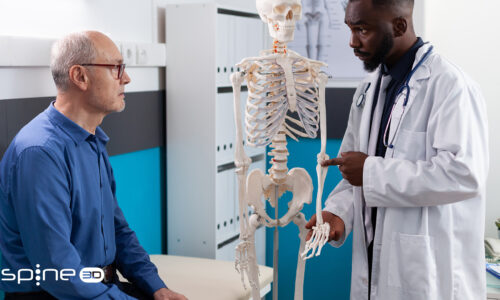
Back pain: employee syndrome and RSI
- admin
- January 5, 2023
- Posture, Stress
- Illnesses, John Sarno, Limbs, New York, Repetitive Strain Injury, RSI, Syndrome, technopathy, Tension Myositis Syndrome, Worker
- 0 Comments
A few days ago we started talking about back pain associated with specific work situations and saw how particularly heavy work can create problems for our backs, often generating acute pain. But it is not only ‘hard’ work that gives us physical discomfort. Many problems are in fact associated with even very static jobs, as office workers, who have to spend many hours sitting at a desk, perhaps in front of a monitor, well know. In this case, too, we can identify specific pathologies and provide some practical tips to protect our health.
Office worker syndrome
One of the most widespread occupational illnesses (also called technopathy) is what is also known as ‘office worker syndrome‘. It is obviously generated by incorrect postures and can cause severe back pain, as well as annoying neck and shoulder pain, but also (moving outside our particular area of responsibility) vision problems, carpal tunnel, epicondylitis and hearing discomfort.
An analysis conducted on absenteeism in the workplace determined that more than 40 per cent of these are closely linked to occupational illnesses, thus generated during work itself. Specifically, we are talking about pains related to the musculoskeletal system that beset employees who work long hours in front of a monitor, stationary at their workstation (desk). A job that we would not define as ‘heavy’ according to other parameters (no lifting or moving weights, for example), but that still generates numerous problems. To remedy this, of course, certain precautions can be taken.

With appropriate supports (a trivial footrest, for example) we could already solve several problems. These pains arise precisely from overuse dictated by the repetitiveness of certain movements or specific stresses (holding the same position for many hours) that create tension and stiffening of the muscles.
And it is precisely from repetitive stress that the so-called Repetitive Strain Injury (RSI) disorder of the upper limbs can arise, which is triggered by back pain and can depend on the psychosomatic disorder called Tension Myositis Syndrome. A syndrome that finds in the American professor John Sarno (specialising in rehabilitation medicine at New York University School of Medicine) one of its greatest admirers. The unconscious exploits pain to distract the worker (an employee, in this case) from the less pleasant emotions of his work. Negative emotions that generate stress.
How can we reduce back pain?
What can we do to reduce the pain caused by our work? We can certainly adopt correct postures, using appropriate tools such as ergonomic chairs and frequently changing position in the chair (static is always a problem). It is very important to do some physical activity to keep the body (and mind) fit, the muscles supple, to reduce stress. Little tricks that can make all the difference.

Here are some specific tips that we can give to people who work long hours in the office, sitting behind a desk (and a monitor):
- Take small breaks from time to time;
- rest your elbows on the desk top at a right angle;
- sit correctly, with your back resting against the bottom of the chair;
- use a footrest if you cannot keep your feet firmly on the floor;
- place the computer monitor about 50-70 cm away, in front of your eyes.
And address any problems immediately with a specialist. Your health is in your hands, don’t neglect it.






